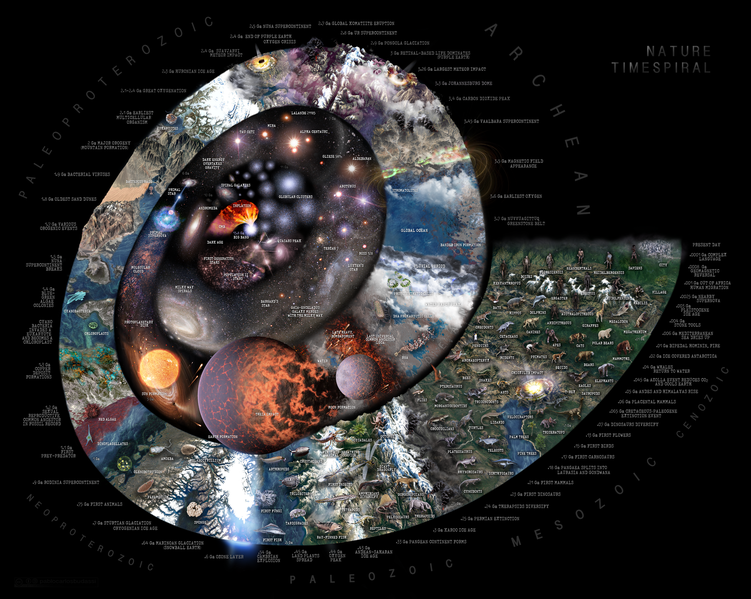8.6 Understanding Geological Time
It’s one thing to know the facts about geological time—how long it is, how we measure it, how we divide it up, and what we call the various periods and epochs—but it is quite another to really understand geological time. The problem is that our lives are short and our memories are even shorter. Our experiences span only a few decades, so we really don’t have a way of knowing what 11,700 years means. What’s more, it’s hard for us to understand how 11,700 years differs from 65.5 million years, or even from 1.8 billion years. It’s not that we can’t comprehend what the numbers mean—we can all get that figured out with a bit of practice—but even if we do know the numerical meaning of 65.5 Ma, we can’t really appreciate how long ago it was.

You may be wondering why it’s so important to really “understand” geological time. There are some very good reasons. One is so that we can fully understand how geological processes that seem impossibly slow can produce anything of consequence. For example, we are familiar with the concept of driving from one major city to another: a journey of several hours at around 100 kilometers per hour. Continents move toward each other at rates of a fraction of a millimeter per day, or something in the order of 0.00000001 kilometers per hour, and yet, at this impossibly slow rate (try walking at that speed!), they can move thousands of kilometers. Sediments typically accumulate at even slower rates—less than a millimeter per year—but still they are thick enough to be thrust up into monumental mountains and carved into breathtaking canyons.
Another reason is that for our survival on this planet, we need to understand issues like extinction of endangered species and anthropogenic (human-caused) climate change. Some people, who don’t understand geological time, are quick to say that the climate has changed in the past, and that what is happening now is no different. And it certainly has changed in the past—many times. For example, from the Eocene (50 Ma) to the present day, Earth’s climate cooled by about 12°C. That’s a huge change that ranks up there with many of the important climate changes of the distant past, and yet the rate of change over that time was only 0.000024°C/century. Anthropogenic climate change has been 1.1°C over the past century,[1]; that is 45,800 times faster than the rate of natural climate change since the Eocene!
One way to wrap your mind around geological time is to put it into the perspective of single year, because we all know how long it is from one birthday to the next. At that rate, each hour of the year is equivalent to approximately 500,000 years, and each day is equivalent to 12.5 million years.
If all of geological time is compressed down to a single year, Earth formed on January 1, and the first life forms evolved in late March (roughly 3,500 Ma). The first large life forms appeared on November 13 (roughly 600 Ma), plants appeared on land around November 24, and amphibians on December 3. Reptiles evolved from amphibians during the first week of December and dinosaurs and early mammals evolved from reptiles by December 13, but the dinosaurs, which survived for 160 million years, were gone just after Christmas (December 26). The Pleistocene Glaciation got started at around 6:30 p.m. on New Year’s Eve, and the last glacial ice left southern Canada by 11:59 p.m.
It’s worth repeating: on this time scale, the earliest ancestors of the animals and plants with which we are familiar did not appear on Earth until mid-November, the dinosaurs disappeared after Christmas, and most of Canada was periodically locked in ice from 6:30 to 11:59 p.m. on New Year’s Eve. As for people, the first to inhabit Canada got there about one minute before midnight, and the first Europeans arrived about two seconds before midnight.
***See 8.7 for Text and Media Attributions
- Climate change data from NASA Goddard Institute for Space Studies: http://data.giss.nasa.gov/gistemp/tabledata_v3/GLB.Ts.txt ↵

